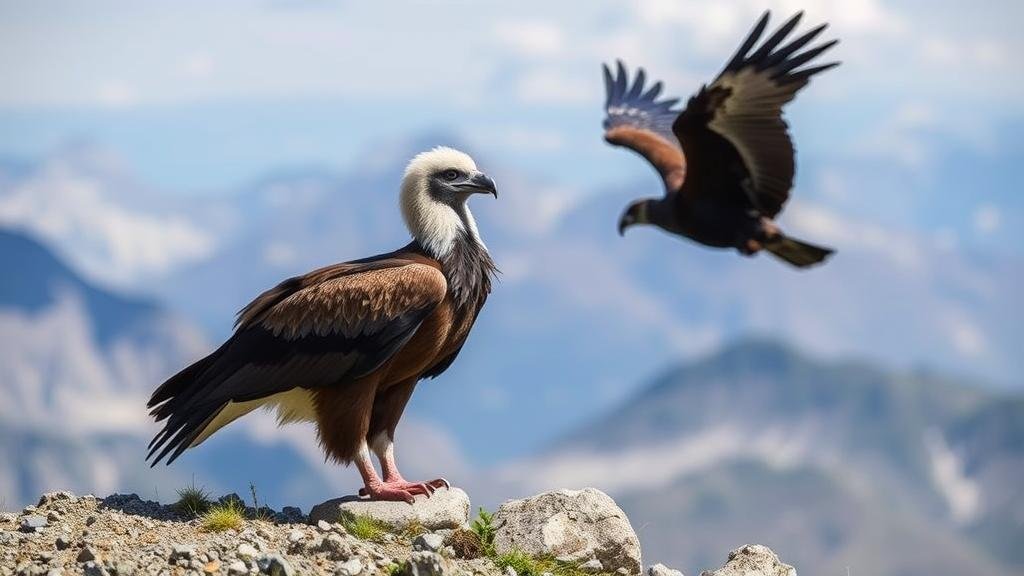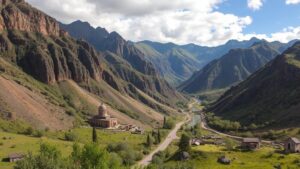Exploring mountain ranges to find the breeding grounds of the elusive lammergeier.
Exploring Mountain Ranges to Find the Breeding Grounds of the Elusive Lammergeier
The lammergeier, also known as the bearded vulture (Gypaetus barbatus), is one of the most fascinating raptors in the world. Renowned for its unique feeding habits and impressive wingspan of up to 2.8 meters, this majestic bird is often considered a symbol of the mountainous regions it inhabits. Understanding its breeding patterns and the habitats it chooses is crucial for its conservation. This article delves into the mountain ranges that serve as breeding grounds for the lammergeier and the ecological factors influencing its habitat selection.
Habitat and Geographic Distribution
Lammergeiers primarily reside in mountainous regions across Europe, Africa, and Asia. Major regions include:
- The Alps in Europe, particularly in countries like Switzerland and France.
- The Himalayas, where the bird often soars at altitudes above 4,000 meters.
- The Rocky Mountains in North America, where small populations have been reported.
According to the International Union for Conservation of Nature (IUCN), the lammergeier’s population has been classified as Near Threatened, with an estimated population of only 10,000 individuals globally. Conservation efforts in these mountain regions are crucial for ensuring the sustainability of lammergeier populations.
Breeding and Nesting Behavior
Lammergeiers typically breed in remote and rocky cliffs that offer protection from predators. r nesting season generally occurs from late winter through early summer, spanning from February to August. The birds engage in elaborate courtship displays, which include aerial acrobatics and vocalizations that reaffirm their pair bonds.
The breeding process usually consists of the following stages:
- Nesting Sites: Lammergeiers often return to the same nesting site year after year. These nests are often made from large sticks and lined with softer materials such as fur or feathers. A well-chosen nest can withstand harsh weather and provide a safe place for chicks.
- Egg Laying: A typical clutch consists of one to three eggs, which are incubated for approximately 50 days. Both parents are involved in incubation and ensuring the safety of their offspring.
- Chick Rearing: After hatching, chick development depends significantly on the availability of carrion. Interestingly, lammergeiers are known for their unique feeding technique of dropping bones from great heights to access marrow.
Ecological Factors Influencing Breeding Grounds
The selection of breeding grounds by lammergeiers is profoundly influenced by various ecological factors:
- Food Availability: Lammergeiers are predominantly scavengers; thus, areas rich in carcasses, especially of large mammals such as sheep, goats, and deer, are favorable. For example, the alpine regions of France support a healthy lammergeier population due to the availability of livestock carcasses.
- Human Activity: Increasing human encroachment in mountain habitats poses threats by producing disturbances that may discourage breeding or lead to habitat destruction. For example, tourism in the Alps has led to habitat fragmentation, negatively impacting breeding success rates.
- Climate Conditions: Elevation and weather patterns greatly affect the availability of nesting sites. Lammergeiers prefer cliff faces that receive adequate sunlight, which helps in thermoregulation of the nest during the winter months.
Conservation Efforts
Various organizations have taken steps to conserve lammergeier populations and their habitats. Initiatives include:
- Habitat Protection: Establishing protected areas where human activities are minimized is pivotal. For example, the Vanoise National Park in France has been instrumental in conserving breeding populations.
- Public Awareness Campaigns: Educating the public about the importance of the lammergeier and the ecological role it plays encourages community involvement in conservation efforts.
- Research Initiatives: Studies aimed at tracking movement patterns through satellite telemetry have become increasingly popular. These studies help identify critical feeding and nesting sites.
Conclusion
Exploring the mountain ranges that serve as breeding grounds for the elusive lammergeier provides critical insights into the challenges and successes of conservation efforts. By understanding its ecological needs, breeding behaviors, and the impact of human activities, proactive measures can be implemented to protect this magnificent bird. The ongoing preservation of its habitats is not only essential for the lammergeier itself but also contributes to maintaining the overall health of mountain ecosystems.
As nature enthusiasts and conservationists, we can advocate for responsible tourism and participate in local conservation programs. Our actions can significantly contribute to ensuring that future generations will witness the majestic flight of the lammergeier soaring above the mountains.



